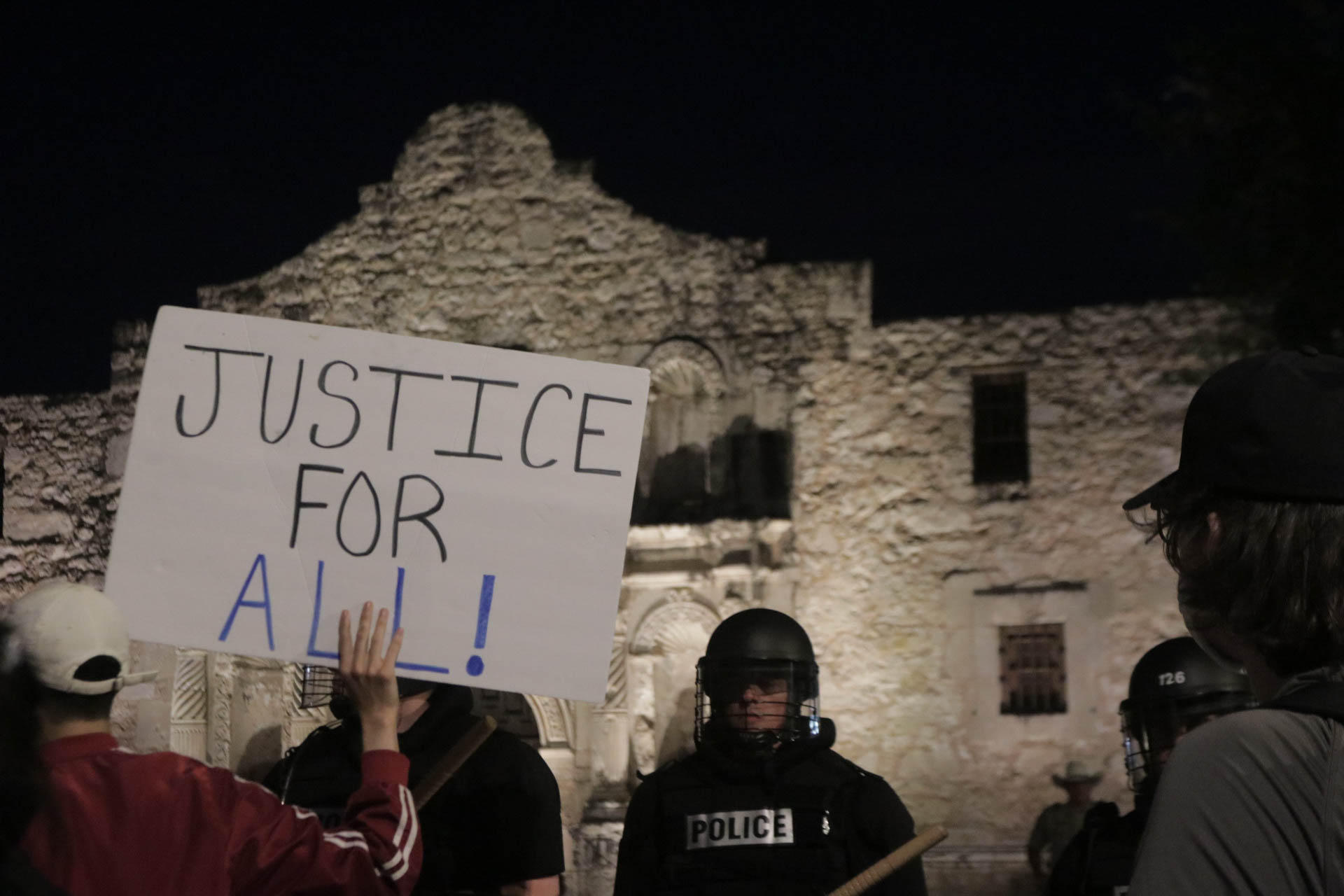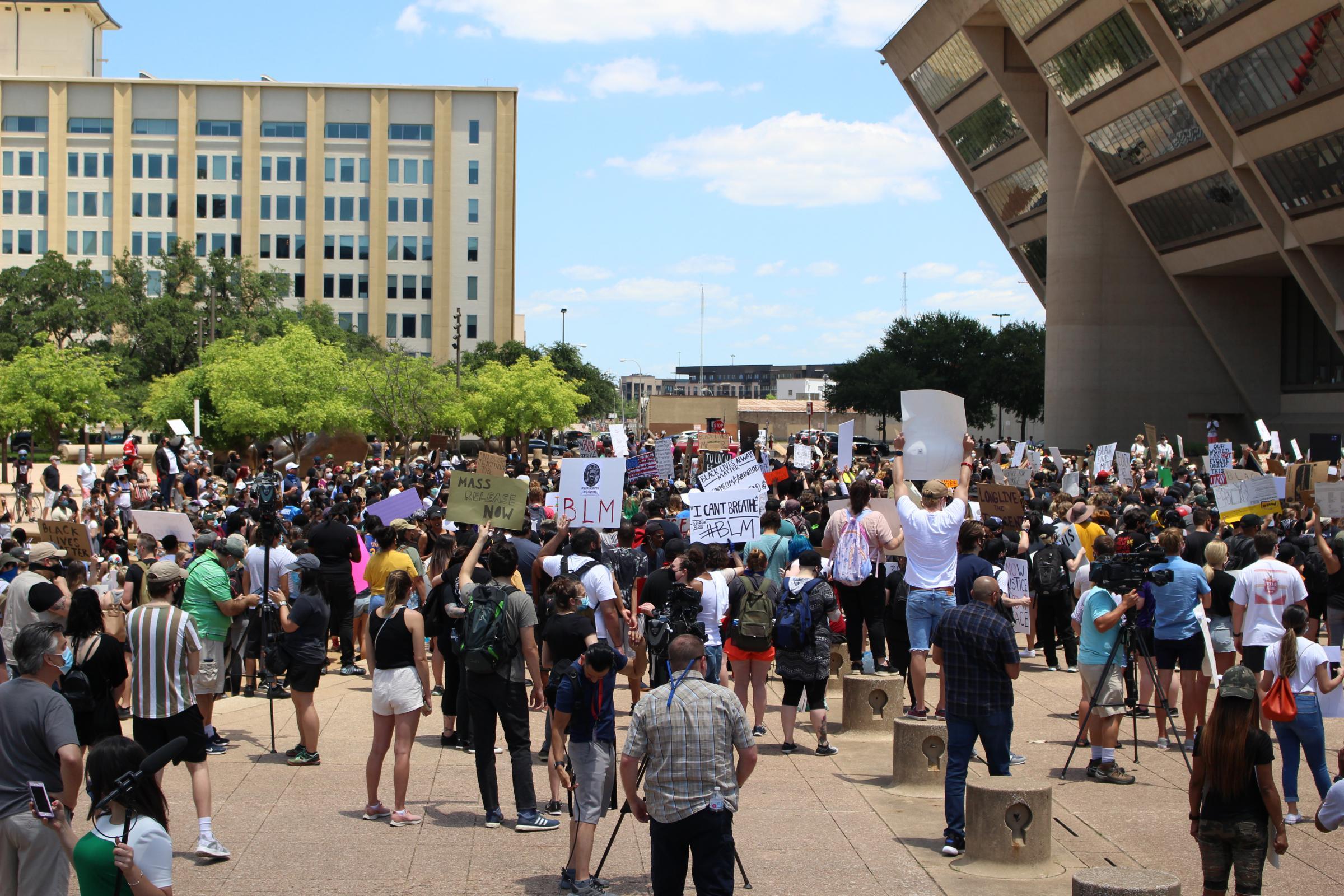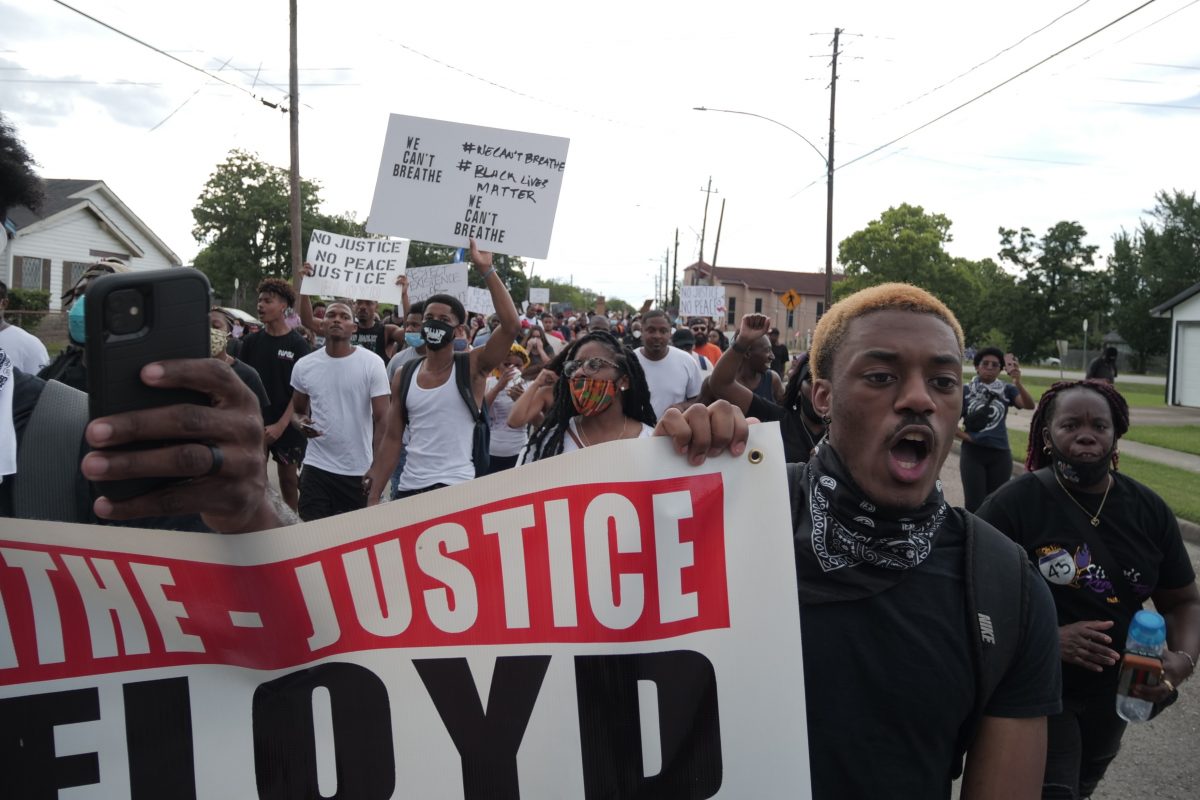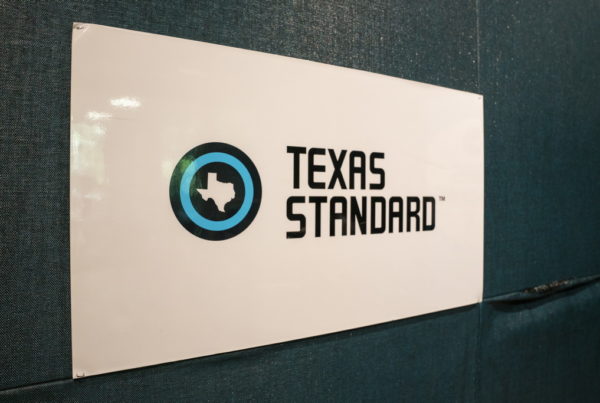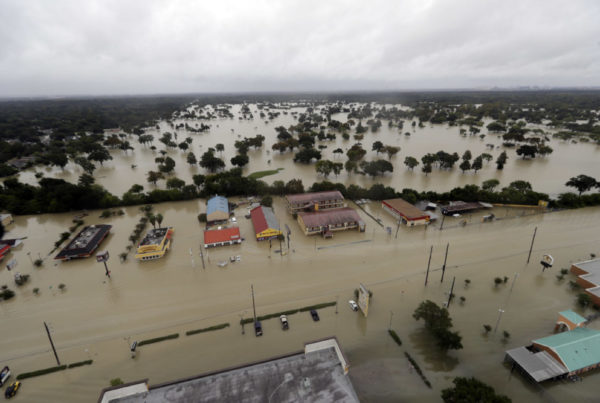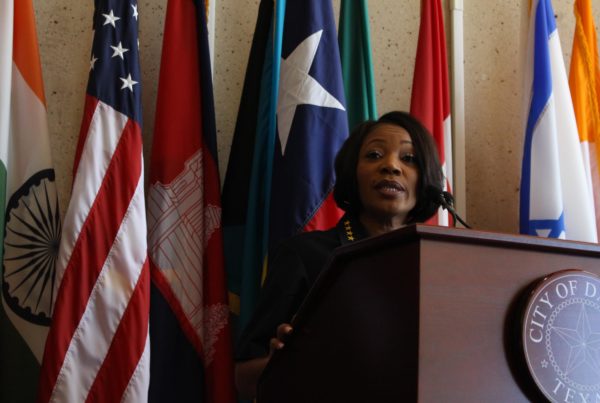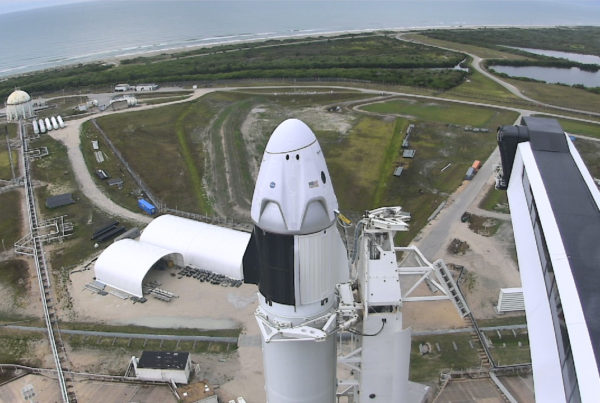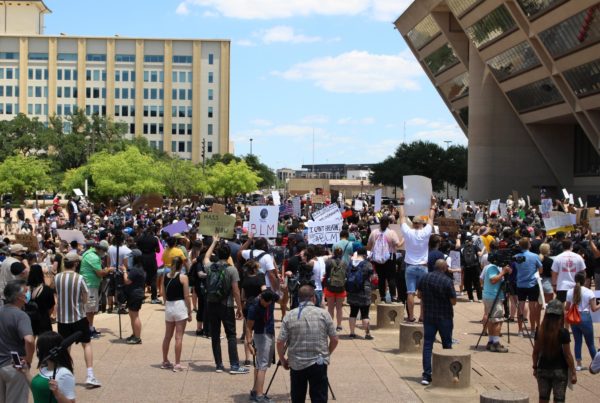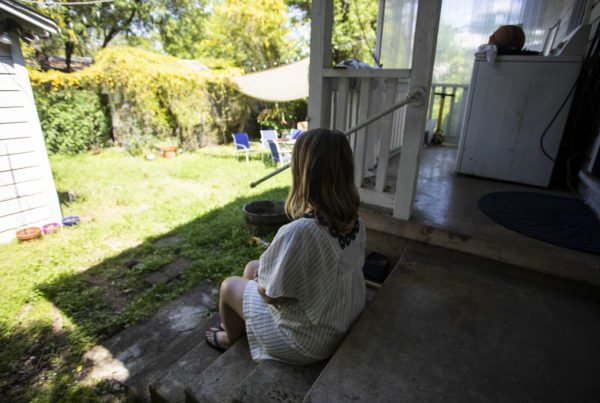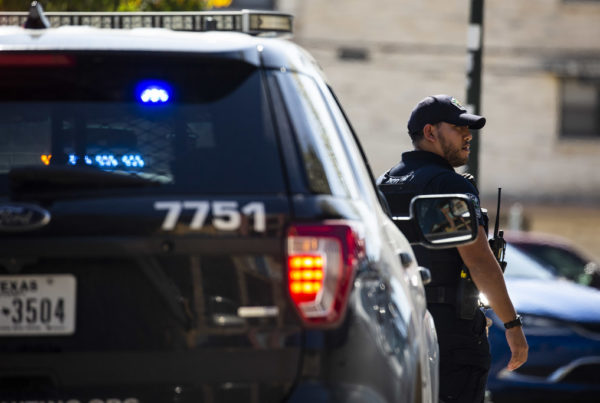Southbound lanes of the highway near Austin Police headquarters were blocked due to protesters, some of whom kneeled and chanted “Black Lives Matter” while facing a row of officers. Officers then retreated to police headquarters. Someone in a helicopter overhead used a loudspeaker to warn police would use “tear gas” if people did not leave the highway.
This post has been updated.
Demonstrators took to the streets in communities around the state and the nation over the weekend, protesting the death of George Floyd, a Houston native who died in police custody in Minneapolis. While many encounters began peacefully, blocked roadways and reports of looting resulted in arrests and stepped-up police presence in San Antonio, Dallas, Austin and Houston.
On Sunday, Texas Gov. Greg Abbott declared a state of disaster in all Texas counties.
Saturday, the governor had announced he was activating the National Guard. He also said he had also sent state resources to Houston, Dallas, San Antonio and Austin to maintain public safety. In an email, he said he and DPS officials had spoken with mayors, as well as law enforcement officials in those cities.
“Texans have every right to exercise their first amendment rights, but violence and looting will not be tolerated,” the governor said in a statement.
Saturday In San Antonio, a riot broke out on East Houston Street Saturday night after a peaceful march and vigil for Floyd turned violent.
People broke into and looted from shops while San Antonio police officers responded by releasing tear gas and shooting people with pepper and rubber bullets to clear the area. Multiple people were taken into custody.
The situation devolved into a riot after protesters, counterprotesters and police clashed outside the historic Alamo.
Protesters stood toe-to-toe with police officers in riot gear, shouting and throwing water bottles. Officers made rough arrests and fired tear gas and pepper bullets into crowds.
Hundreds of people demonstrated outside Austin Police headquarters and on I-35 on Saturday and Sunday, temporarily blocking all lanes of traffic. In addition to Floyd’s killing, protesters cited the death of Mike Ramos, a 42-year-old black and Hispanic man who was killed by Austin police last month.
There were reports of looting on Sixth Street later in the evening, and a mattress and car were lit on fire under I-35. APD said it had made “approximately a dozen arrests.”
On Sunday, the Austin Justice Coalition announced that a planned rally at the state Capitol had been canceled due to safety concerns. But protesters showed up at the Capitol anyway, marching through downtown Austin and onto I-35.
Protests in Dallas started peacefully on Saturday, but police later used tear gas to disperse protestors in downtown, while other demonstrators briefly shut down highways and looted businesses.
As of 11 p.m., Dallas police had made 74 arrests, including 10 arrests involving people on freeways. Those arrested will be charged with inciting a riot.
A curfew began at 7 p.m. Sunday in downtown Dallas and nearby neighborhoods. Police Chief Renee Hall said it will be in effect until 6 a.m. beginning Monday, and those hours will continue for the next several days.
Hall said the curfew covers Deep Ellum, Farmers Market, Central Business District, West End, Victory Park and Uptown, with Oak Lawn Avenue, Riverfront Boulevard, Corinth Street and Peak Street serving as boundaries.
The Houston Police Department drastically increased its presence on the streets of the city Saturday. In a march that began in Emancipation Park, protesters and police walked side-by-side in the early evening, with Police Chief Art Acevedo standing up front, speaking with demonstrators as he went.
“We stand with these Black Lives Matter activists out here that what justice, that is what we all want out here,” Acevedo said as he marched. “And most importantly, we want to respect our cities, and respect the memory of George Floyd by protesting, demanding action, and doing it in a way that honors his life and his memory.”
During a press conference with Mayor Sylvester Turner earlier Saturday, Acevedo said that there would be a significant increase in the amount of law enforcement throughout the city, with the entire police department working rotating 12-hour shifts. Turner said he had also activated the Office of Emergency Management.
“If you think there were a lot of cops yesterday, that’s nothing compared to what we’re going to have moving forward now that we’re fully mobilized and we have assets from other agencies,” Acevedo said.


